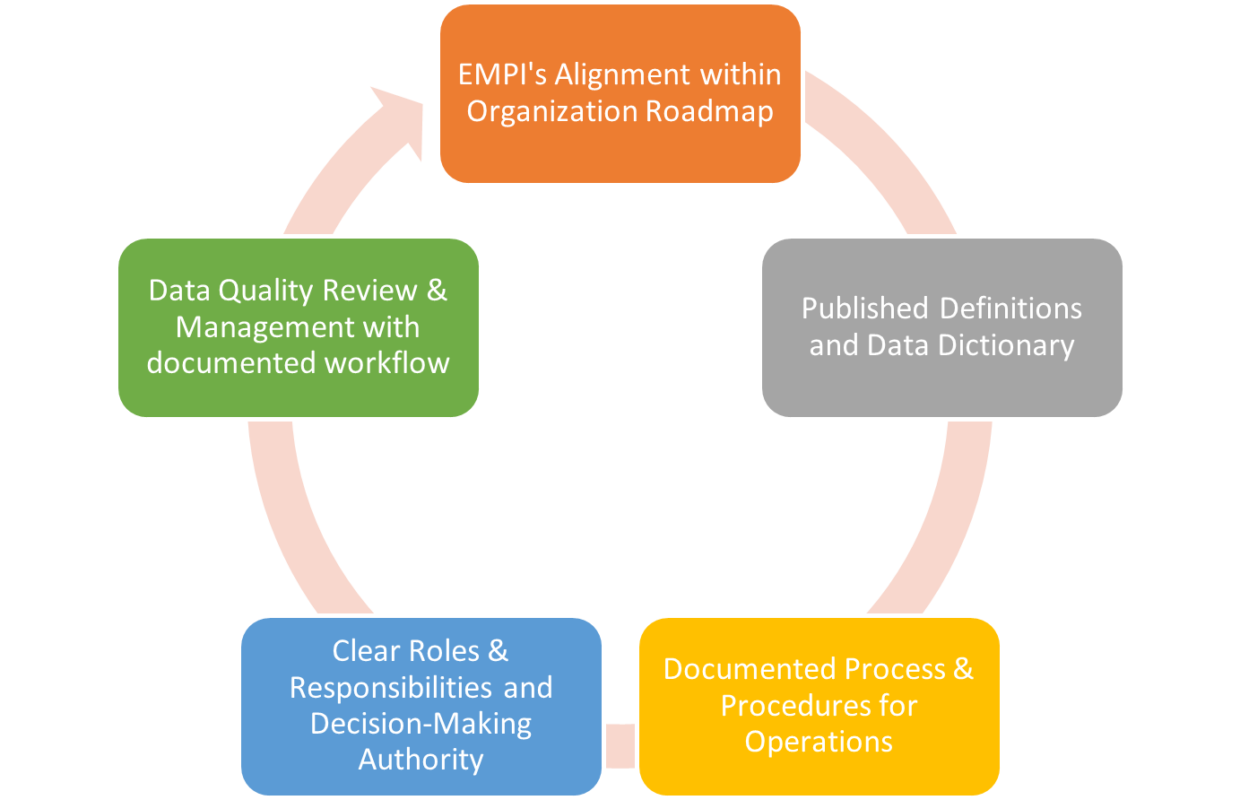By Minakshi Tikoo
You probably hear the buzz about data governance. It almost sounds too bourgeois, and many treat the construct as a big-to-do. Simply put, it is a process that facilitates creation of agreed upon rules by which you manage and manipulate your data. Data governance is not an all or none construct. How complex you want to make your data governance structure depends on the size and maturity of your organization. Data governance is a continuum, think of it as a scale dependent on the time spent on data governance related activities which in turn are dependent on the organization data maturity. Even simple data governance processes yield a return on investment (ROI) for EMPI implementation, as most activities are focused on management of potential duplicates. On the other extreme are organizations that are mature in their use of data and have committee and sub-committees that manage the data and the meta-data and have detailed documentation of rule sets that written guidance about how the data are used and managed. Additionally, staff have clearly delineated roles and responsibilities about who can do what to which data.
To get the optimal ROI from your EMPI, ongoing routine active management of potential duplicate records is needed irrespective of whether your organization has elected an active integration or operates the EMPI as a backend integrator for multiple data streams that comprise your health IT infrastructure. This is as an essential workflow that you want to get right as it has several direct and indirect consequences for downstream and upstream systems that both consume and/or contribute to the identities being actively managed in the EMPI.
Usually, a simple governance structure is comprised of the following steps 1) organization roadmap with clear connections to data governance 2) published definitions and data dictionaries 3) clear policies and procedures for operations 4) clear delineation of roles and responsibilities with decision-making authority 5) data quality review and management via documented workflows. This is a continuous workflow where the process informs the decisions and the decisions about data management and resulting analysis inform the process – resulting in a continuous cycle of data cleaning and management. A complex and mature organization commits greater time to follow a detailed and structured approach to the list mentioned above and adds a few more pieces like, technology governance, legal and compliance oversight.
At the end of the day, most healthcare organizations use an EMPI at the core of their IT infrastructure and either have a structured data governance processes or de facto data governance. De facto data governance can work and is completely dependent on the quality and rigor of the HIM staff. We recommend that organizations start with simple data governance structures and as the concept of data governance are socialized and become well-practiced that the organization introduce additional rules and processes.
Minakshi Tikoo is the Director of Product Management for NextGate, the global leader in identity modernization and data transformation in healthcare. You can reach her at minakshi.tikoo@nextgate.com.

